What are acrylic nails
Acrylic nails are artificial improvements applied to natural nails to create a longer and more long- lasting nail surface. They are a type of nail extension and are popular in the beauty and fashion industry. The process involves a combination of a liquid monomer and a powder polymer to create a strong and flexible artificial layer on the natural nails.
Here’s a Basic Overview Of The Process:

Acrylic nails are popular because they are known for their strength and long-lasting. They can be customized in terms of length, shape, and color, and they provide a longer-lasting alternative to natural nails. However, it’s important to note that the application and removal processes should be done by a trained professional to minimize the risk of damage to the natural nails. Regular maintenance is also necessary to keep acrylic nails looking their best.
Preparation
The natural nails are cleaned and cut, and the surface polished to create a rough texture for better fixing.
Application of Tips (Optional):
If desired, plastic or acrylic tips can be applied to the natural nails to extend their length.
Application of Acrylic Mixture:
A liquid monomer and a powder polymer are mixed to create a dough-like consistency, which is then applied to the natural nails or tips. The mixture sets quickly, creating a solid and long-lasting layer.
Shaping and Filing:
Once the acrylic has dried, the nails are shaped and filed to achieve the desired length and shape.
Finishing:
The nails are then clean and polished to create a smooth and shiny surface. Nail polish or nail art can be applied as want and wish.
Advantages:

Long-lasting:
Acrylic nails are known for their strength and long-lasting, making them less prone to breaking or chipping compared to natural nails.
Adjustability:
Acrylic nails can be customized in terms of length, shape, and color. They provide an adjustable canvas for various nail art designs and embellishments.
Quick Application:
The process of applying acrylic nails is relatively quick, and the acrylic mixture monetarist fast, allowing for efficient salon sessions.
Ideal for Nail Extensions:
Acrylic nails are commonly used for nail extensions, providing a solution for individuals who want longer nails.
Considerations:
Odor:
The liquid monomer used in the acrylic application process has a strong odor that some people may find unpleasant. Adequate ventilation is important in the salon during application.
Maintenance:
Acrylic nails require regular maintenance, including infills to fill in the gap that naturally occurs as the natural nail grows. Neglecting maintenance can lead to lifting and potential damage.
Removal:
The removal process involves soaking the acrylic nails in acetone to break down the material. It’s recommended to have a professional handle the removal process to avoid damage to the natural nails.
Risk of Damage:
If not applied or removed properly, acrylic nails can potentially damage the natural nails. It’s crucial to seek the services of a skilled and trained nail technician.
Allergic Reactions:
Some individuals may be allergic to the ingredients in acrylic products. It’s important to do a patch test before a full application to check for any adverse reactions.
While acrylic nails have been popular for many years, there are also alternative nail enhancement options available, such as gel nails and dip powder nails. Each type of nail enhancement has its own set of characteristics and considerations, so individuals can choose the one that best suits their preferences and lifestyle.
Application Process:
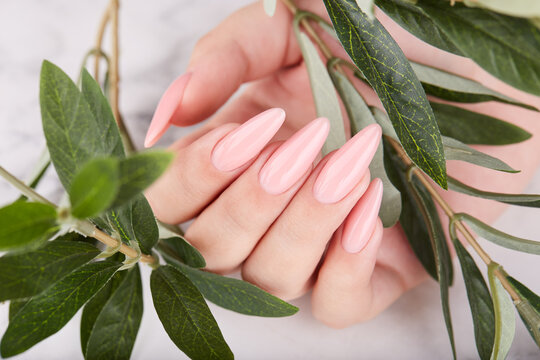
Monomer and Polymer:
Acrylic nails are created by mixing a liquid monomer (usually ethyl methacrylate) with a powdered polymer. This mixture forms a soft, moldable substance that hardens when exposed to air.
Sculpting or Tips:
Acrylic nails can be applied in two main ways. The first method involves sculpting the acrylic mixture directly onto the natural nails to create the desired shape and length. The second method involves attaching pre-made plastic or acrylic tips to the natural nails before applying the acrylic mixture.
Curing:
Unlike gel nails, which require UV or LED light for curing, acrylic nails harden through a chemical reaction between the liquid monomer and the powder polymer.
Maintenance:
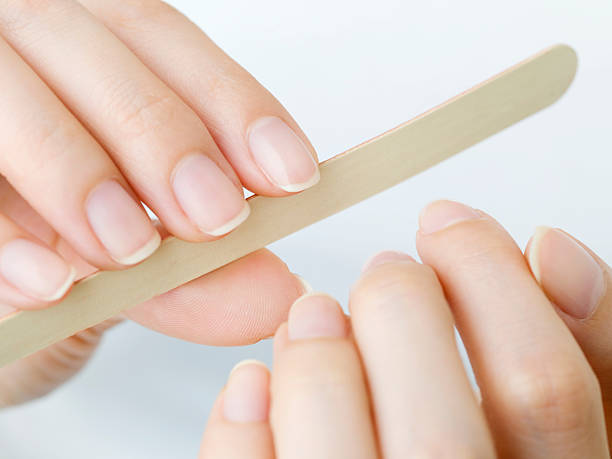
Infills:
As the natural nails grow, a gap may appear between the cuticle and the acrylic nail. Regular maintenance, known as infills or fills, involves filling in this gap to keep the acrylic nails looking seamless.
Refills:
Over time, the acrylic nails may wear down, especially at the tips. Refills involve adding more acrylic material to reshape and reinforce the nails.
Polishing and Design:
Acrylic nails can be polished with regular nail polish or enhanced with various nail art designs. The sturdy surface of acrylic nails provides an excellent base for creative and intricate designs.
Removal Process:
Soaking:
To remove acrylic nails, they are usually soaked in acetone. Some salons use acetone-soaked cotton pads wrapped in foil, while others use specialized soaking dishes.
Gentle Buffing:
After soaking, the softened acrylic material is gently buffed away. It’s important to avoid forceful scraping, as this can damage the natural nails.
Moisturizing:
After removal, it’s recommended to moisturize the natural nails and cuticles, as the acetone can be drying.
Health Considerations:
Breathing Precautions:
Acrylic nail application involves the use of products with strong odors. Nail technicians and clients are often advised to use masks or work in well-ventilated areas to minimize inhalation exposure.
Allergies:
Some individuals may develop allergies or sensitivities to the chemicals used in acrylic nail products. It’s essential to be aware of any adverse reactions and seek medical advice if necessary.
Nail Health:
Giving the natural nails a break between sets of acrylic nails is recommended to allow them to recover and maintain their overall health.
Remember that professional application and removal are crucial for the best results and to minimize the risk of damage to the natural nails. If done correctly, acrylic nails can be a long-lasting and aesthetically pleasing option for those looking to enhance the appearance of their nails.
Common Shapes and Styles:
Square:
The square shape is a classic choice for acrylic nails. It involves filing the tips of the nails to create a square shape with straight edges.
Round:
Round acrylic nails have curved edges and a slightly rounded tip, providing a softer and more natural look.
Almond:
Almond-shaped acrylic nails are narrower at the base and wider at the tips, resembling the shape of an almond. This style can create the illusion of longer fingers.
Stiletto:
Stiletto nails are long and pointed, similar to the shape of a stiletto heel. This dramatic style is favored by those looking for a bold and edgy look.
Coffin (or Ballerina):
Coffin-shaped acrylic nails are tapered at the sides and squared off at the tips, resembling the shape of a coffin. This style has gained popularity for its modern and stylish appearance.
Color Options and Nail Art:
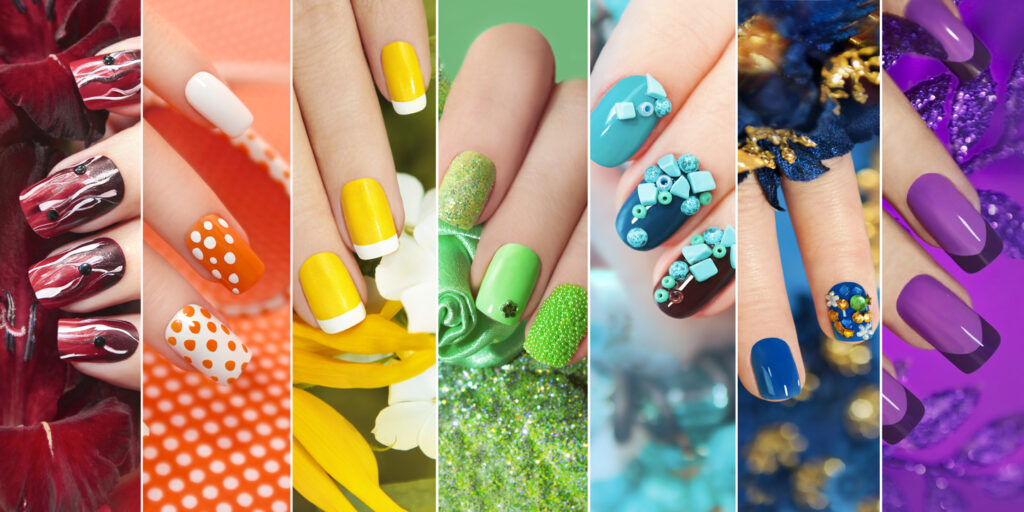
Solid Colors:
Acrylic nails can be painted with a wide range of solid nail polish colors, allowing for endless customization.
French Tips:
The classic French manicure is a popular choice for acrylic nails, featuring a natural pink or beige base with white tips.
Ombre:
Ombre acrylic nails transition between two or more colors, creating a gradient effect. This style can be subtle or bold, depending on the color choices.
Glitter and Rhinestones:
Acrylic nails provide a sturdy base for embellishments like glitter, rhinestones, and other nail art accessories, allowing for glamorous and eye-catching designs.
Matte Finish:
Acrylic nails can be finished with a matte top coat for a trendy and worldly look.
DIY Kits:
While professional application is recommended for the best results, some people use acrylic nail kits at home. These kits typically include the necessary acrylic powder, liquid monomer, brushes, and instructions for application.
It’s important to note that DIY acrylic application may require practice, and the results may not be as professional as those achieved in a salon. Additionally, the removal process should still be done carefully to avoid damage to the natural nails.
Trends and Innovations:
Nail trends evolve over time, and new techniques and changes continuously come out. Some recent trends include building in 3D elements, using uncommon materials, and experimenting with unique shapes and designs.
As with any beauty procedure, it’s essential to organize nail health, choose a highly regarded salon or technician, and follow proper aftercare and maintenance routines to keep your acrylic nails looking their best.
Lorem ipsum dolor sit amet, consectetur adipiscing elit. Nibh vel sed amet, ut adipiscing elit fermentum. Orci, feugiat ullamcorper molestie maecenas tincidunt

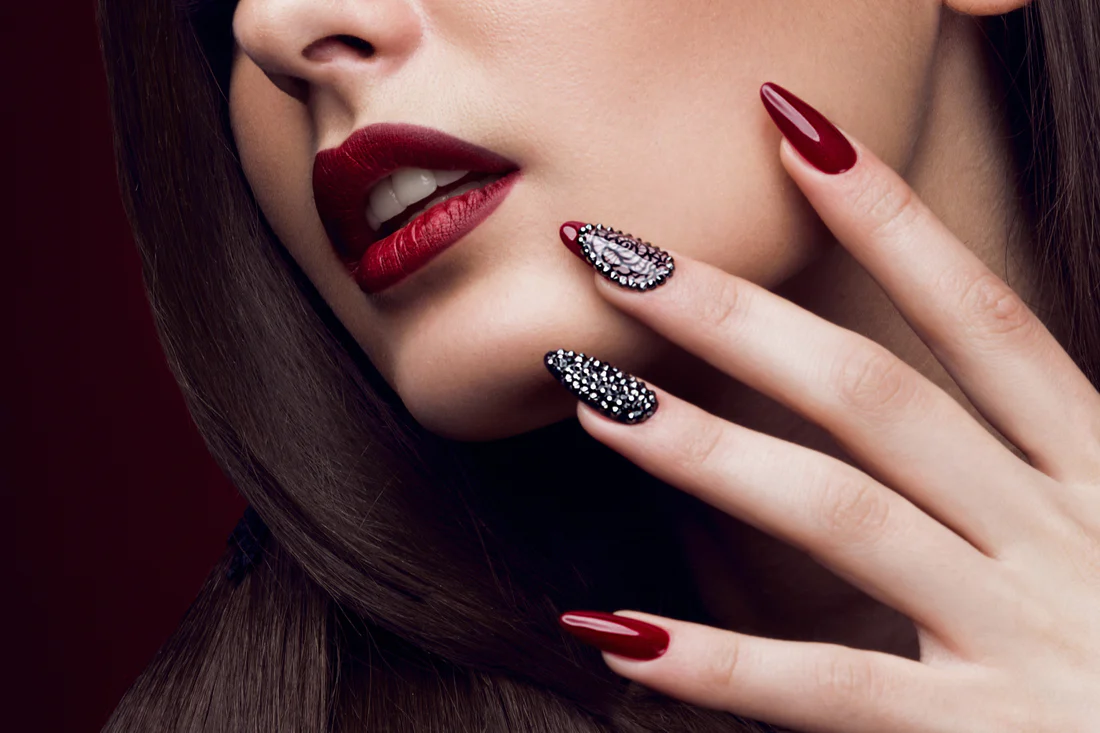
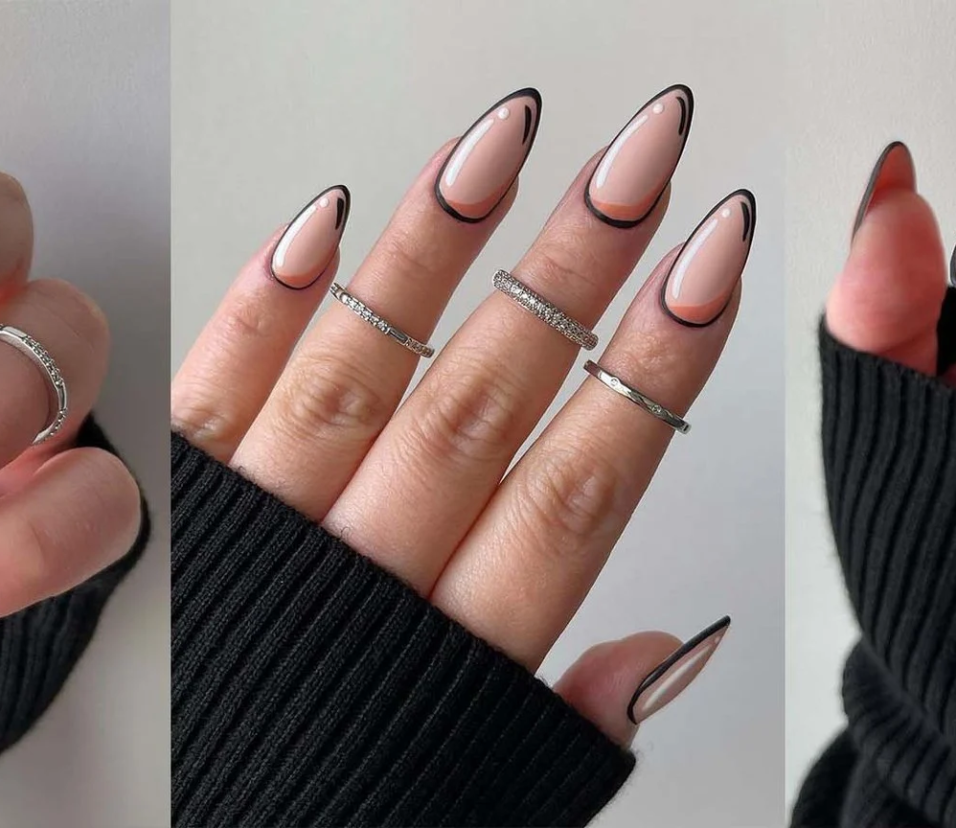
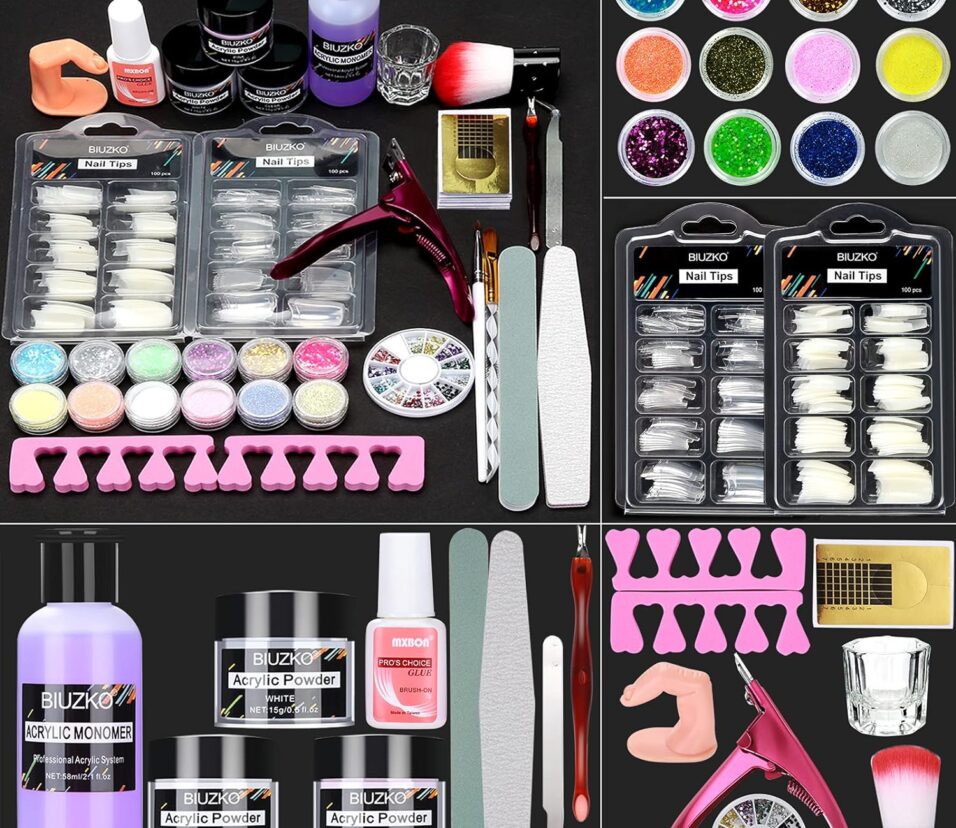
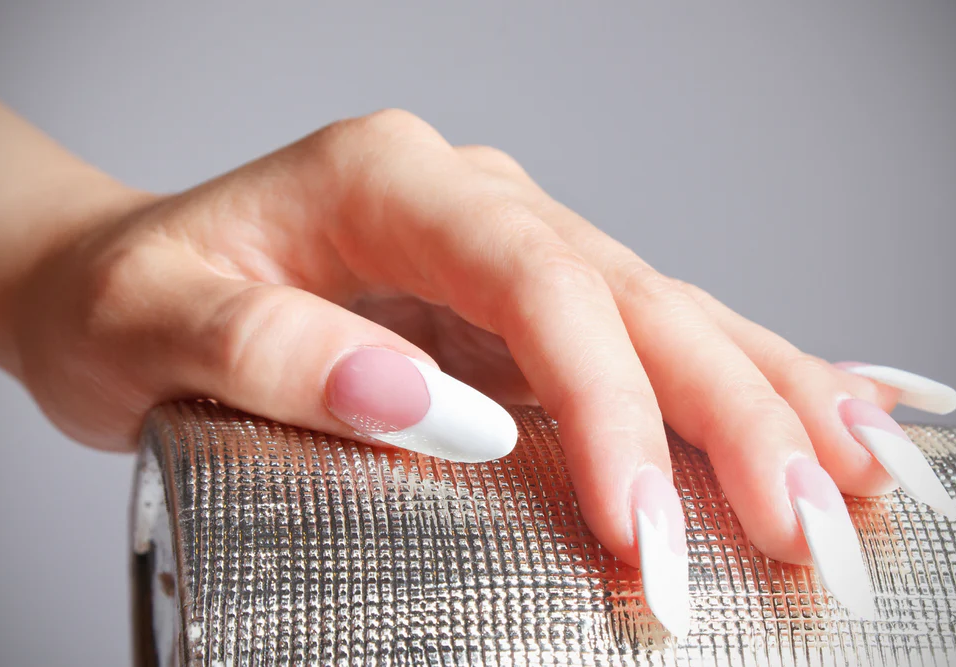
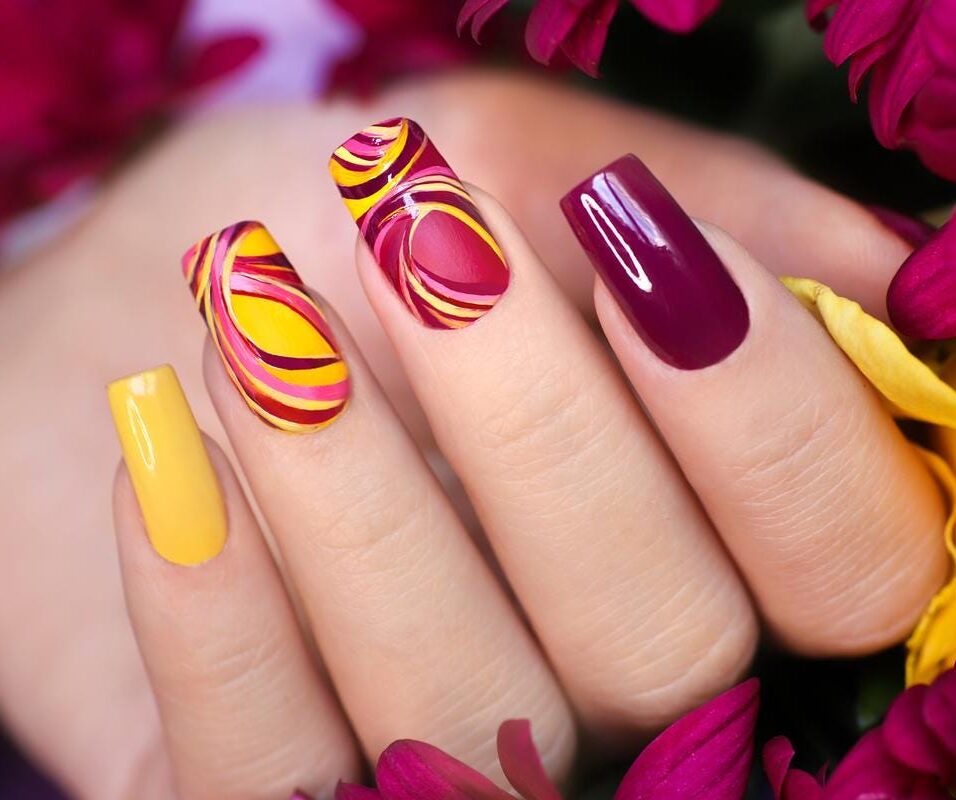
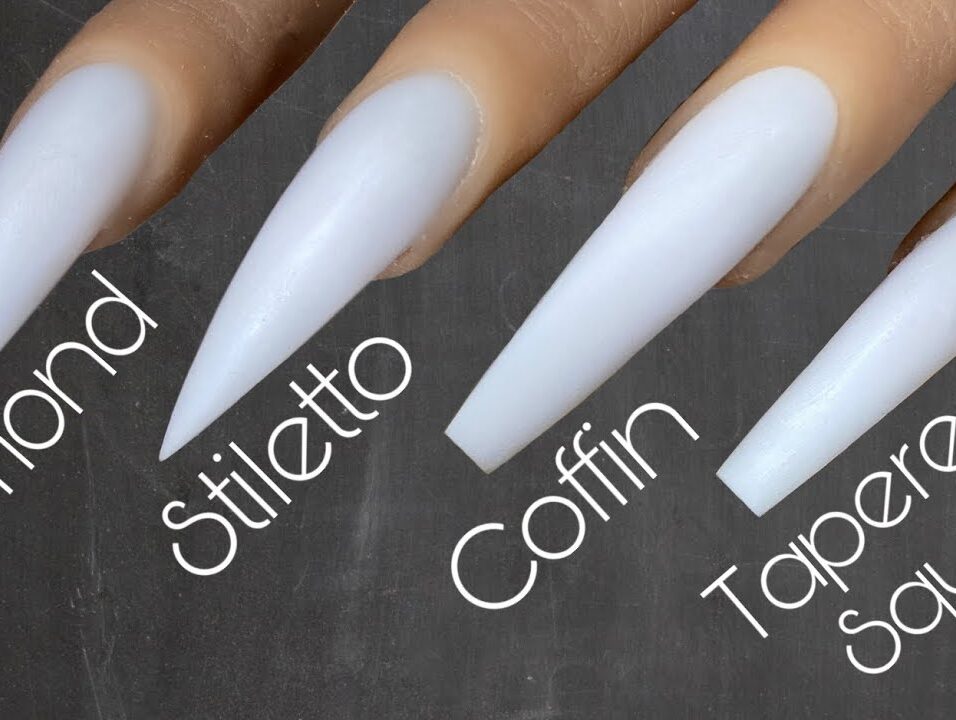
Leave feedback about this